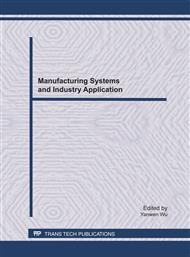[1]
G. Ramos, M. Boulos and R. Balakrishnan: Pressure Widgets. Conference on Human Factors in Computing Systems (2004), pp.487-494.
DOI: 10.1145/985692.985754
Google Scholar
[2]
X. Bi, T. Moscovich, et al: An Exploration of Pen Rolling for Pen-based Interaction. Symposium on User Interface Software and Technology (2008), pp.191-200.
DOI: 10.1145/1449715.1449745
Google Scholar
[3]
F. Tian, X. Ao, et al: The tilt cursor: enhancing stimulus-response compatibility by providing 3D orientation cue of pen. Conference on Human Factors in Computing Systems (2007), pp.303-306.
DOI: 10.1145/1240624.1240675
Google Scholar
[4]
M. Oshita: Pen-to-mime: A Pen-Based Interface for Interactive Control of a Human Figure. EUROGRAPHICS Workshop on Sketch-Based Interfaces and Modeling (2004), pp.43-52.
DOI: 10.1016/j.cag.2005.09.010
Google Scholar
[5]
P. M. Fitts: The information capacity of the human motor system in controlling the amplitude of movement. Journal of Experimental Psychology (1954), 47: pp.381-391.
DOI: 10.1037/h0055392
Google Scholar
[6]
I. S. MacKenzie: Fitts' law as a research and design tool in human-computer interaction. Human-Computer Interaction (1992), 7: pp.91-139.
DOI: 10.1207/s15327051hci0701_3
Google Scholar
[7]
J. Accot and S. Zhai: Beyond Fitts' Law: Models for Trajectory-Based HCI Tasks. Conference on Human Factors in Computing Systems (1997), pp.295-302.
DOI: 10.1145/258549.258760
Google Scholar
[8]
J. Accot and S. Zhai: Performance Evaluation of Input Devices in Trajectory-based Tasks: An Application of Steering Law. ACM CHI (1999), pp.466-472.
DOI: 10.1145/302979.303133
Google Scholar


